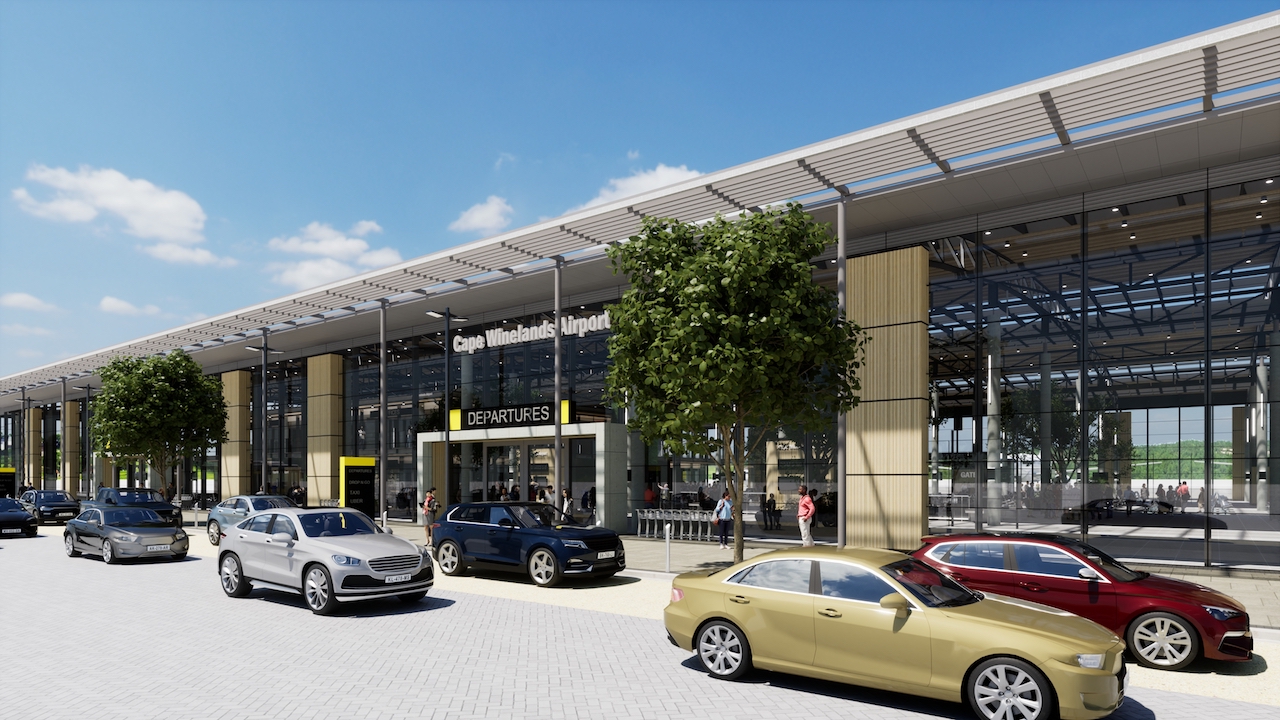Cape Winelands Airport, formerly known as Fisantekraal, is about to undergo a major transformation with the aim of developing it into a major air transport hub in South Africa.
The airport, located on the outskirts of Durbanville, will become an important alternative to Cape Town International Airport, about 45 kilometers away, thanks to its reconstruction.
Opened in 1943, Cape Winelands has long been popular with light aircraft and private pilots, particularly for training flights. In 2020, the airport was acquired by rsa.AERO, which is managed by Nicholas Ferguson, managing director of Cape Winelands Aero and managing director at rsa.AERO. With his background in accounting and property development, Ferguson immediately recognised the value and untapped potential of the airport, which has four runways, two of which are currently in operation.
“We acquired the airport with plans to develop it and as we began to explore the opportunities, its potential as an alternative airport to Cape Town became clear,” he told African Aerospace.
Currently, wide-body aircraft must use Johannesburg OR Tambo Airport, 1,270 km away, as an alternate airport if they are unable to land in Cape Town. “This means airlines have to carry more fuel, which increases CO2 emissions and reduces payload capacity. By providing a closer alternate option, airlines can save significant fuel costs and reduce their emissions,” Ferguson explained.
A study by Netherlands Airport Consultants (NACO) supports the Cape Winelands vision, showing that Cape Town currently handles 10 million passengers annually, but this number is expected to double to at least 20 million by 2050, with five million of these passengers being handled by Cape Winelands Airport.
The airport’s expansion plans for the next three years include the construction of a 3.5km 4F runway, suitable for large aircraft such as the Airbus A380. Phase one, estimated to cost $300-400 million, also includes a new parallel taxiway, taxiway and 25,000 square meter terminal. This phase is expected to be completed by 2027.

Ferguson said: “The environmental impact assessment is expected to be completed early next year. Construction is scheduled to begin in the first quarter of 2025. Construction is expected to take two years.
“In addition, there are plans to develop sites for FBOs, hotels, cargo facilities and other infrastructure as needed to ensure sustainable growth.”
The airport also has plans to become the “greenest” in the world, a “bold but achievable goal,” Ferguson said, which includes operating off-grid for electricity and water. The airport plans to install a solar array and has applied for a 1MW biodigester to generate electricity using grasses grown on site as a feedstock. Any excess electricity will be sold back to the grid, creating an alternative revenue stream.
“On the land side, we also want to build a large public square, hotels, a museum and a wine experience center where we can showcase the region’s wines. We also want to create parking spaces and outdoor advertising to generate additional income.”
The airport is also committed to the digital transformation of aviation and is currently consulting with Saab and NACO on the implementation of Africa’s first digital tower.
“We are undertaking a huge project but we are committed to this goal and it will stimulate economic growth in the region,” said Ferguson. He pointed out that the airport’s board, which consists of a number of outstanding aviation experts, is key to realising this vision. They include two former CEOs of the Airports Company of South Africa (ACSA), the Director General of Cape Town International Airport, the former head of the South African Air Force and the CEO of Safair Operations.
Highlighting the airport’s broader vision, Ferguson concluded: “It used to be that holidays started at the airport, not at the destination. We have lost the love of travel. We want to bring it back by building an airport that is welcoming, offers an experience and a sense of place, blends into the environment and showcases Cape Town as a world-class tourism destination.”
